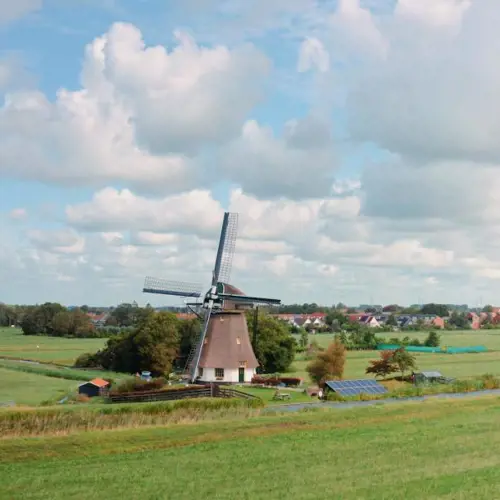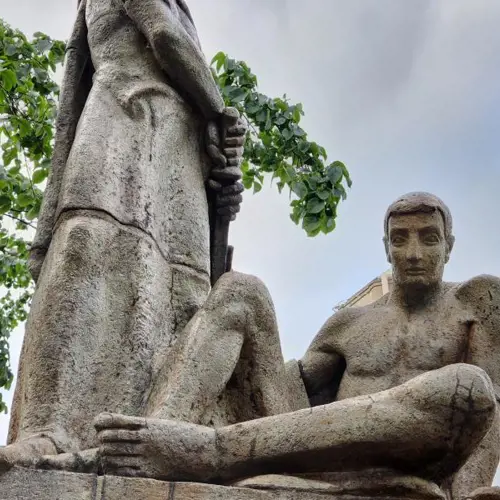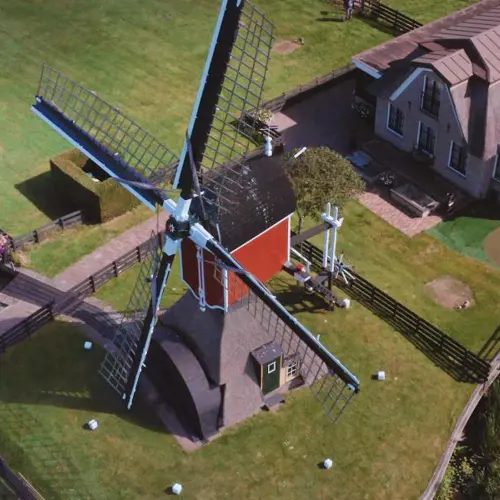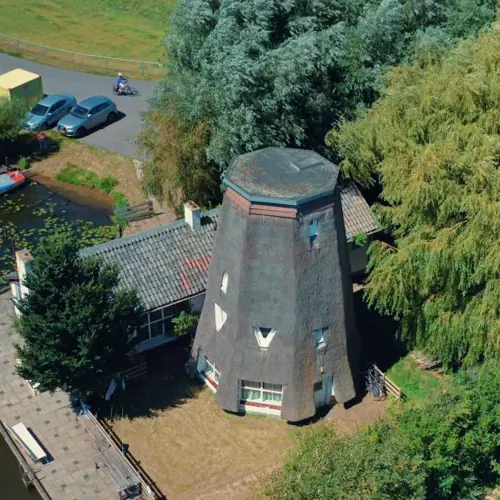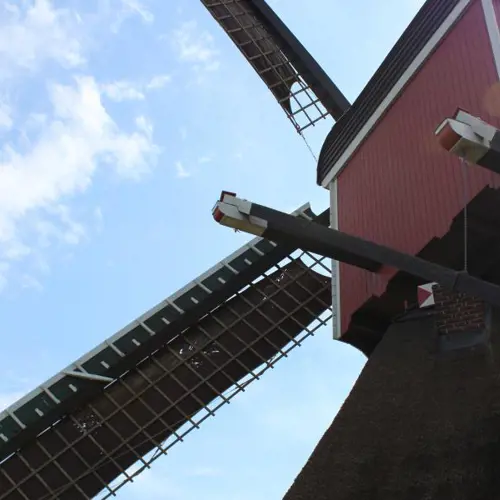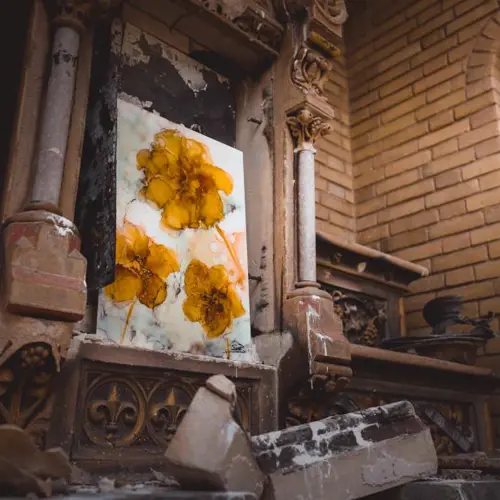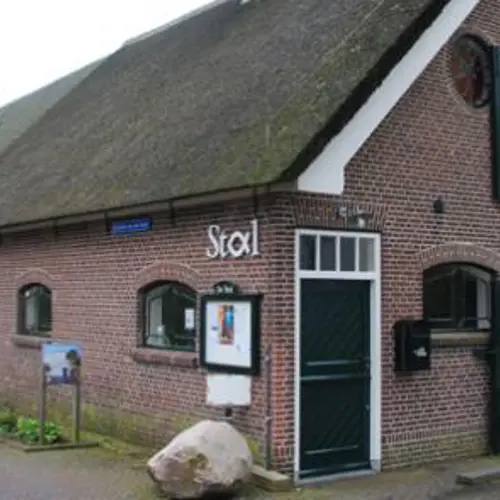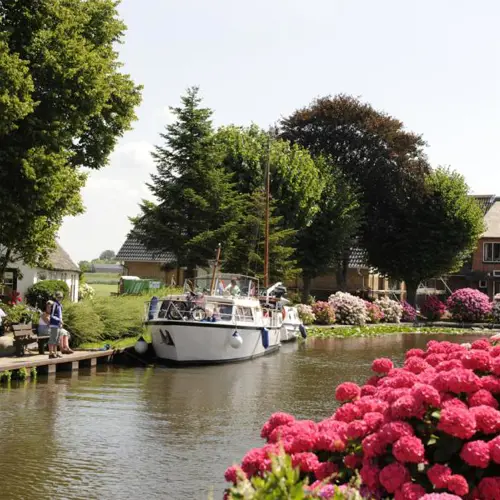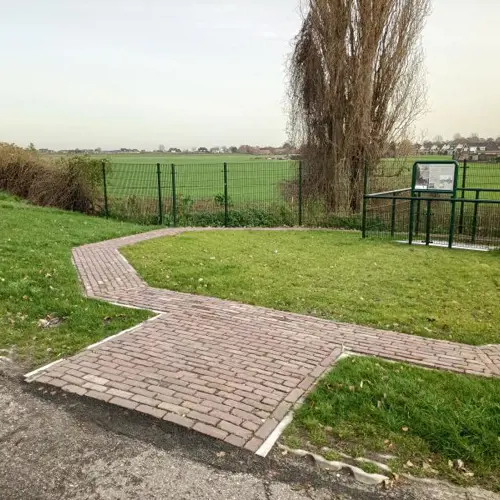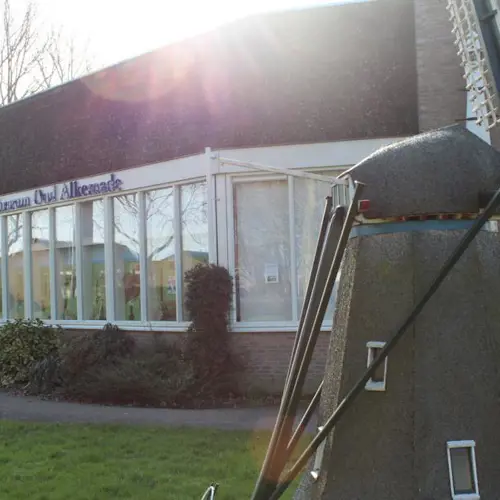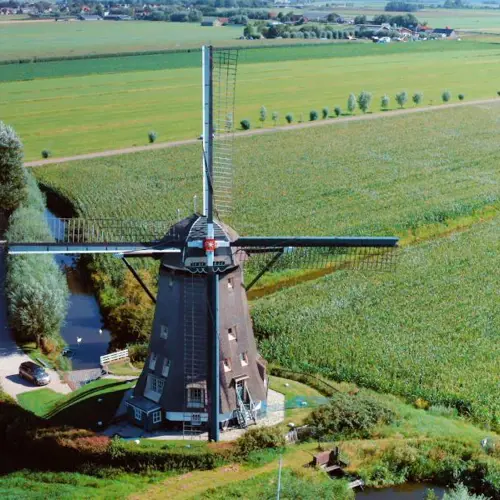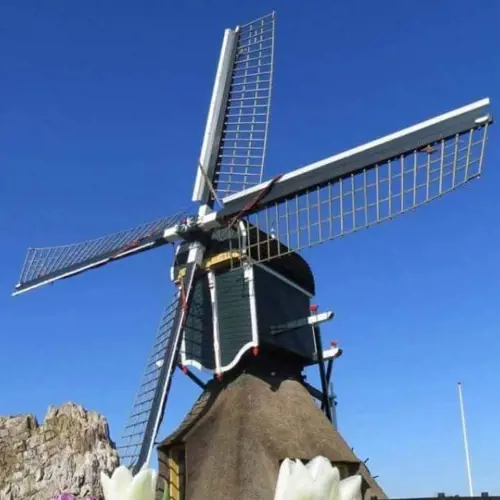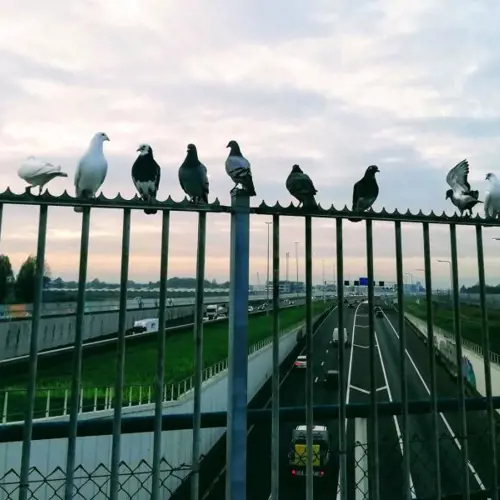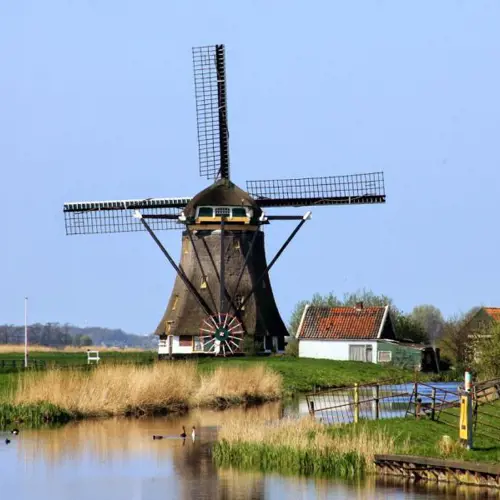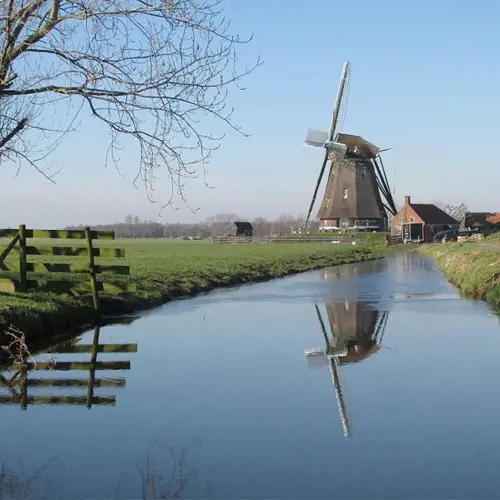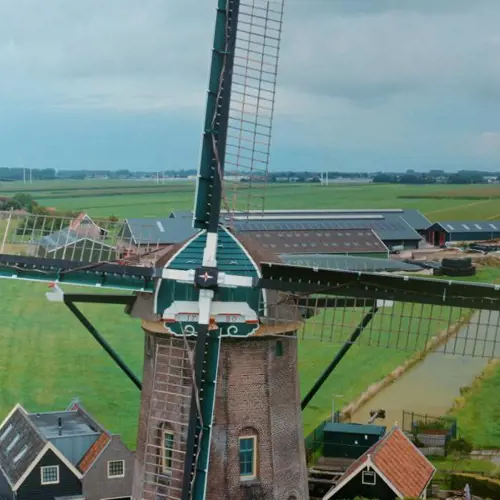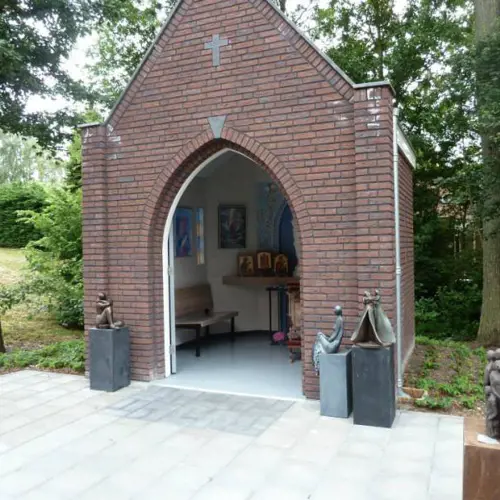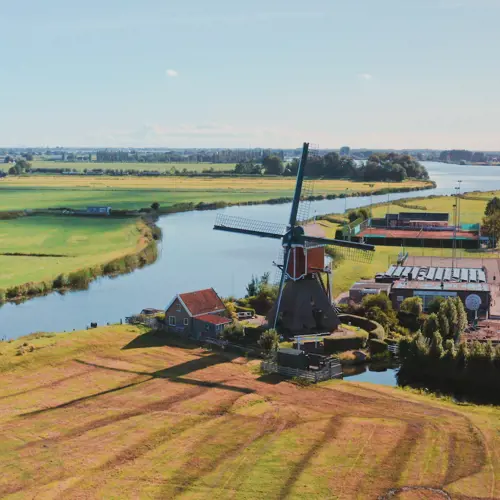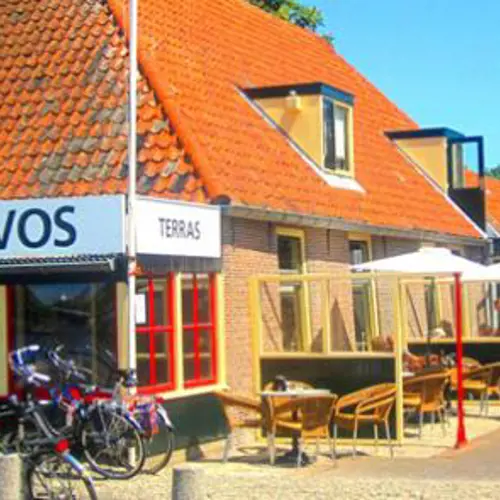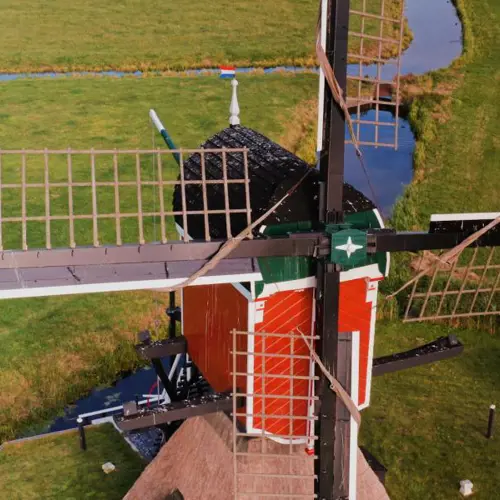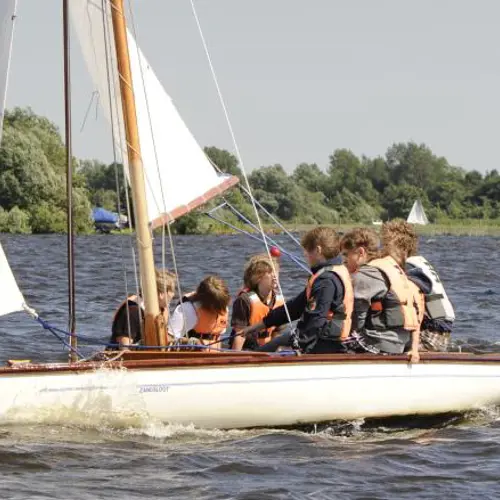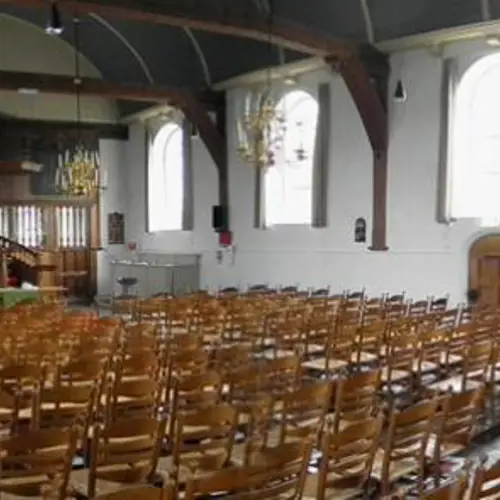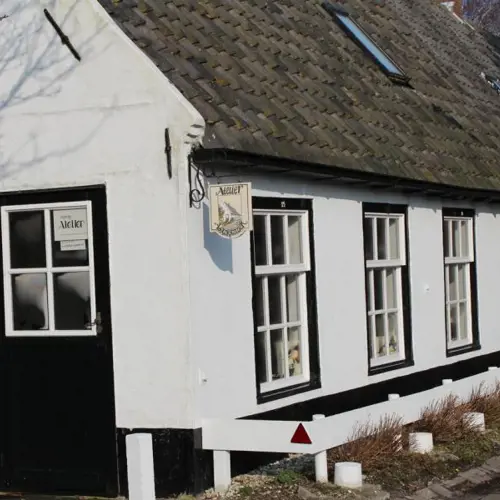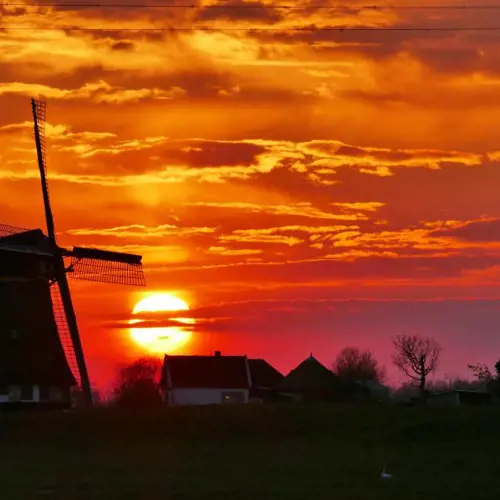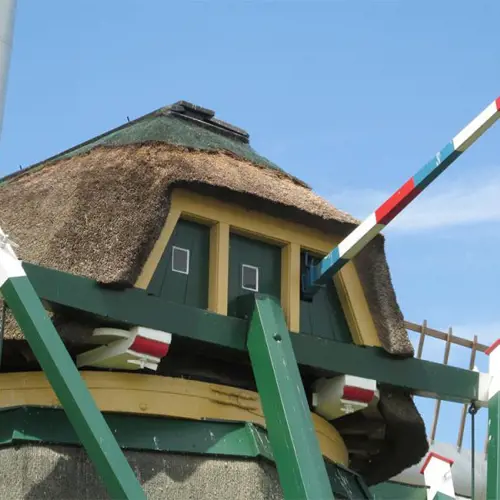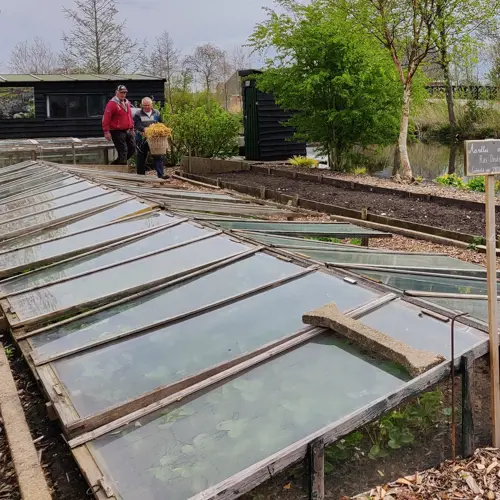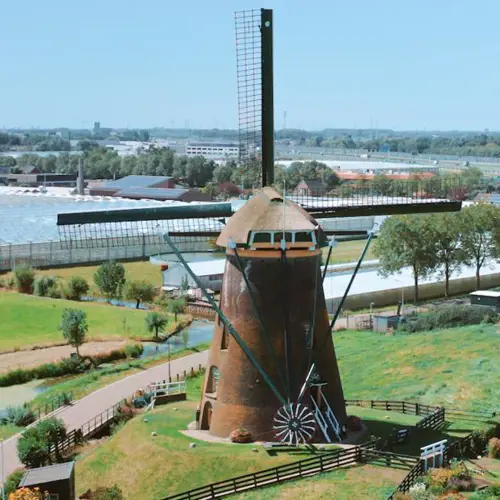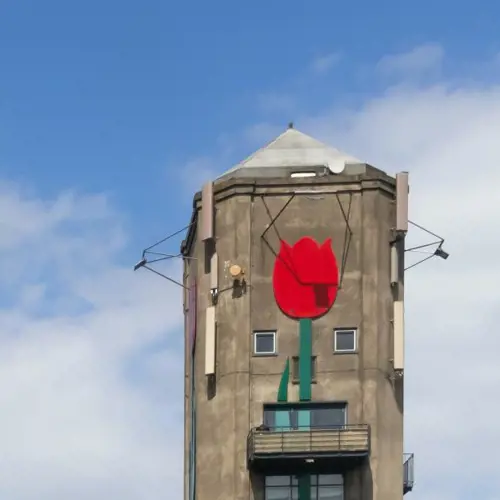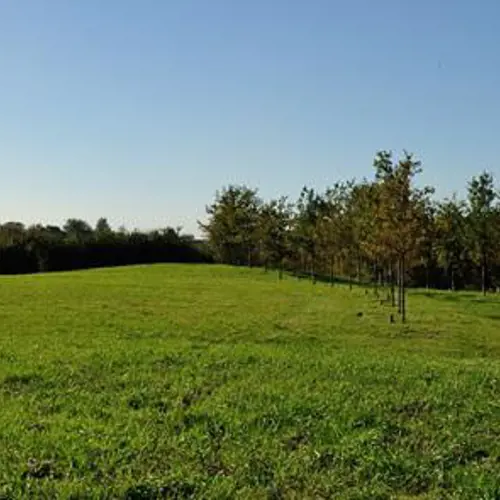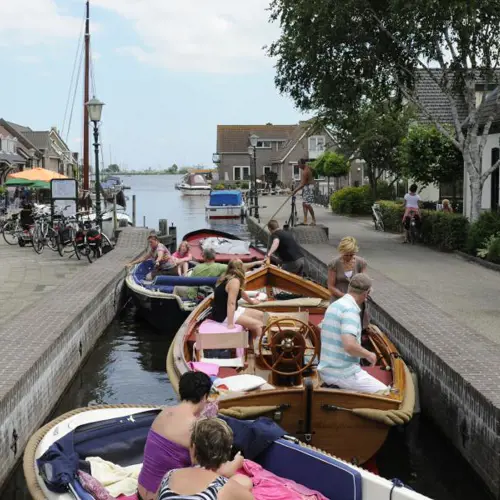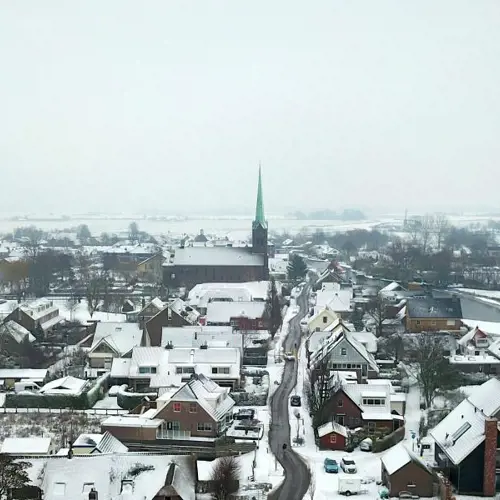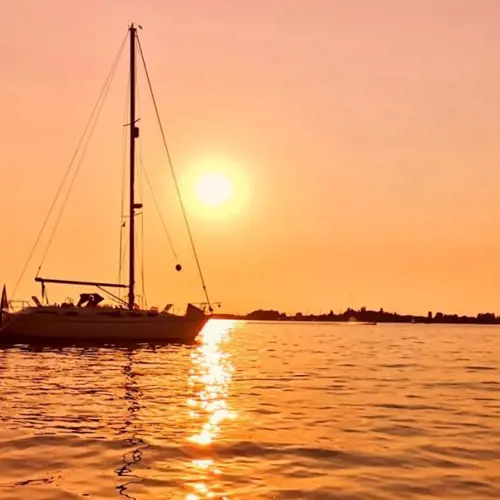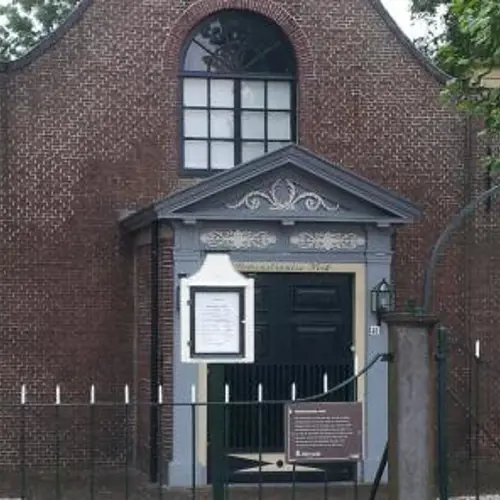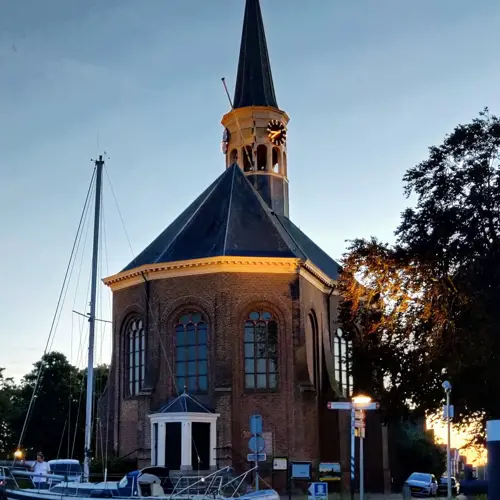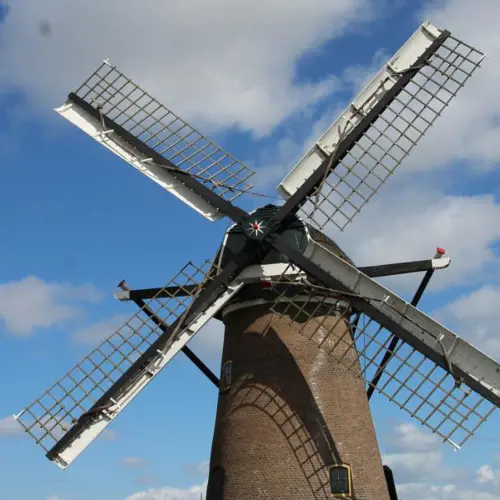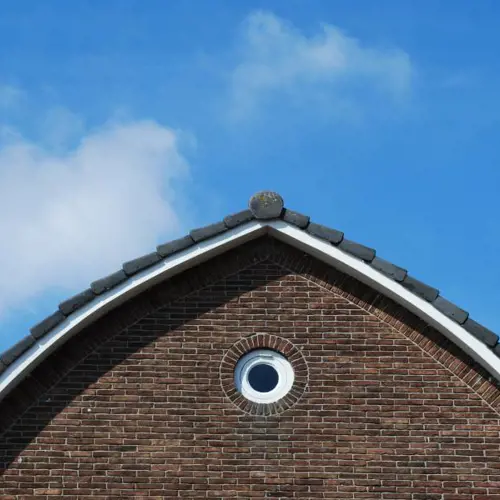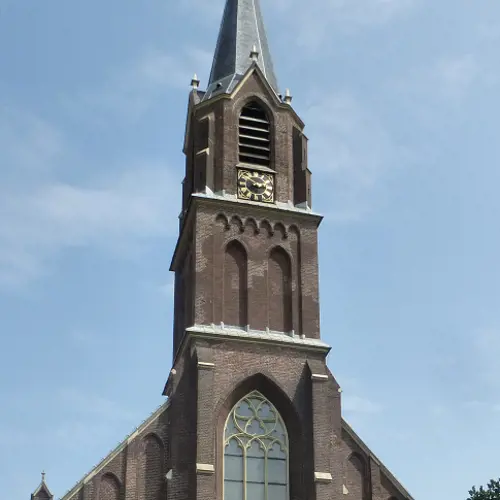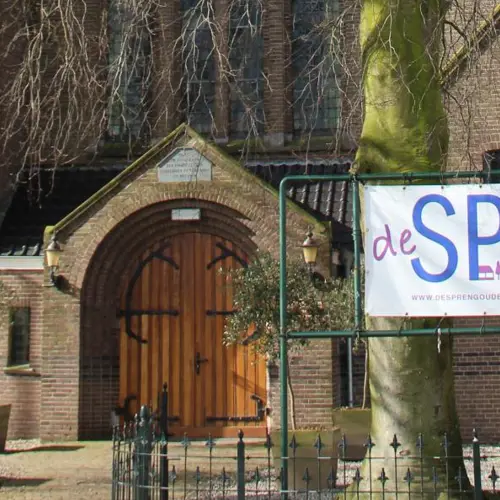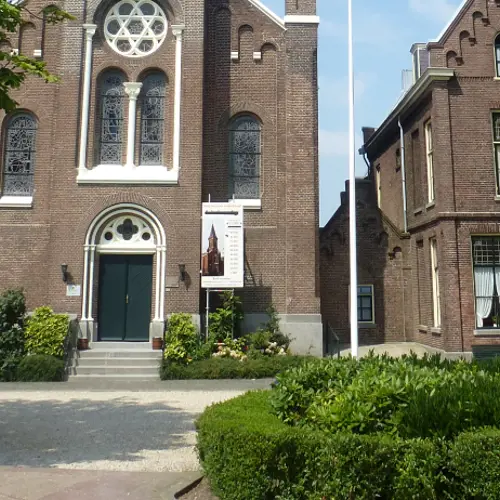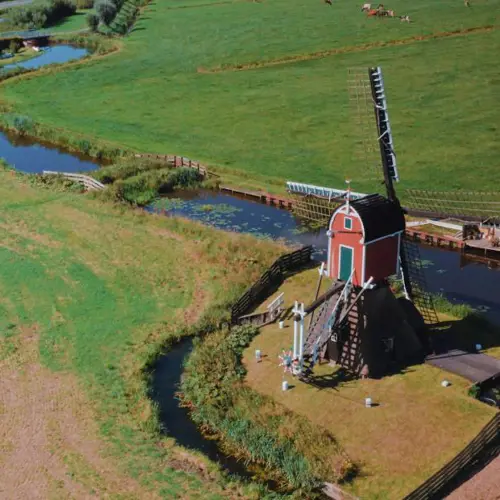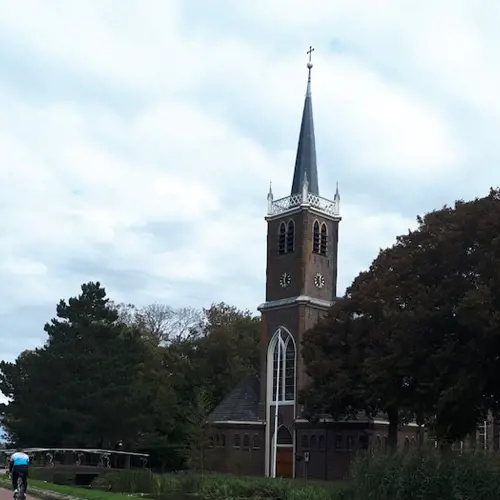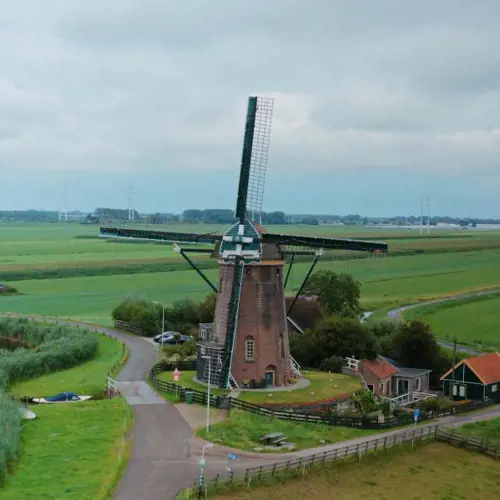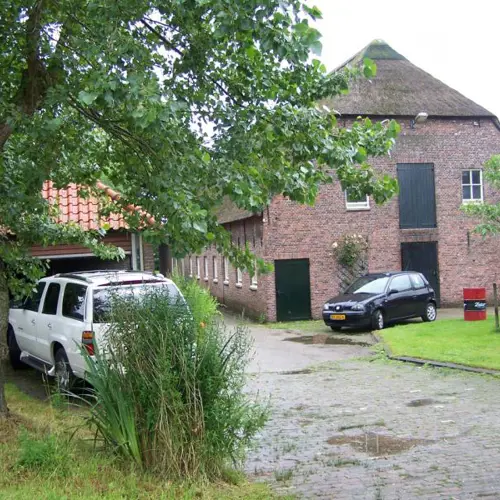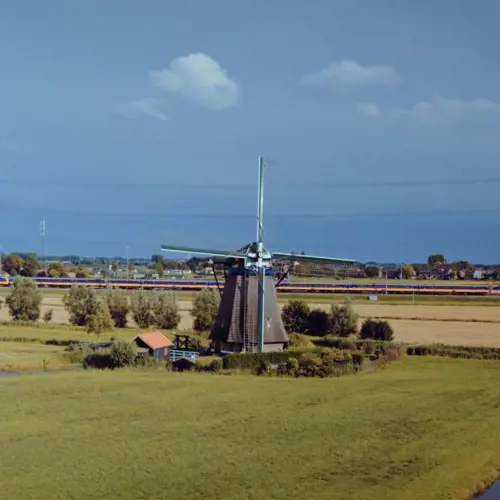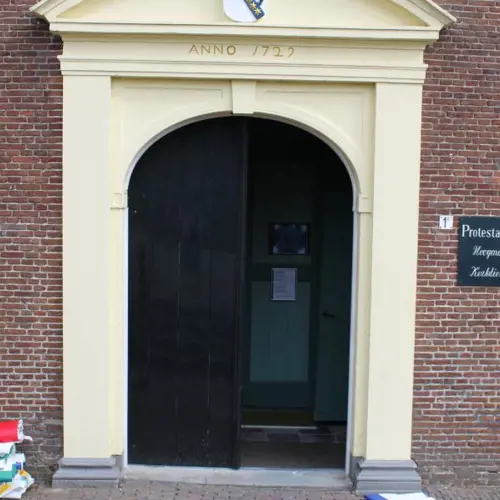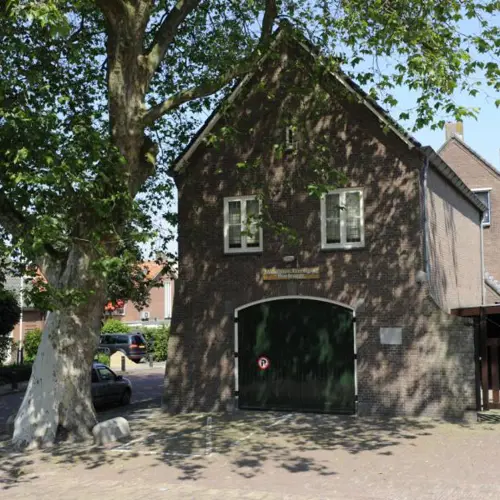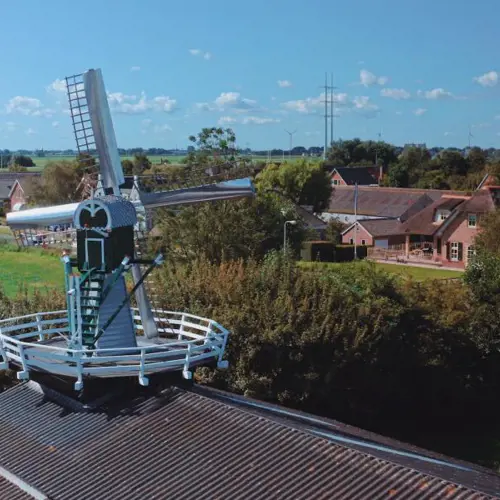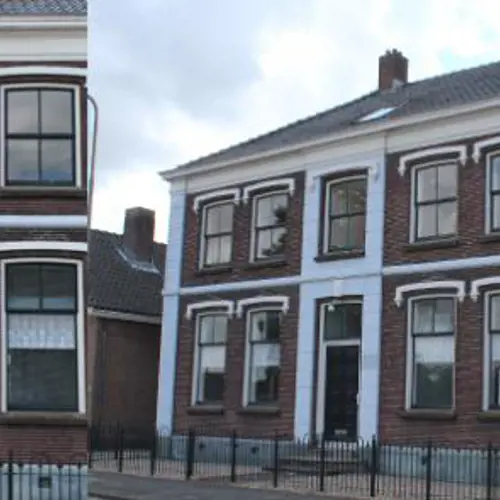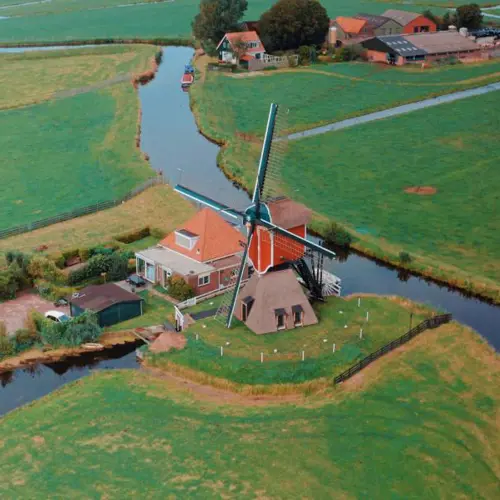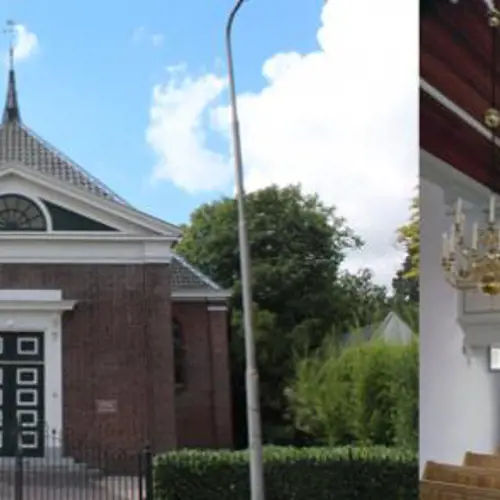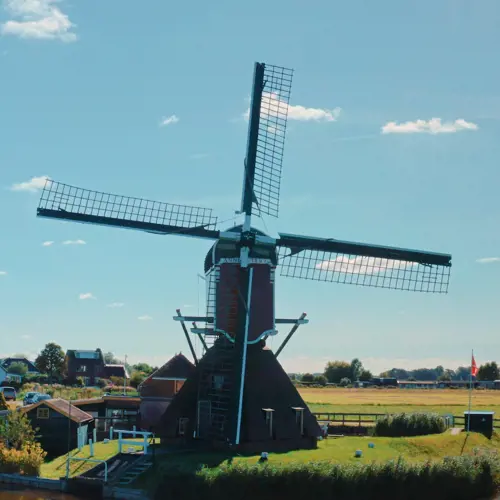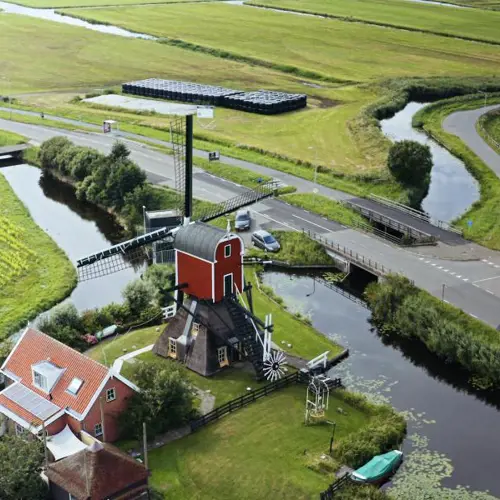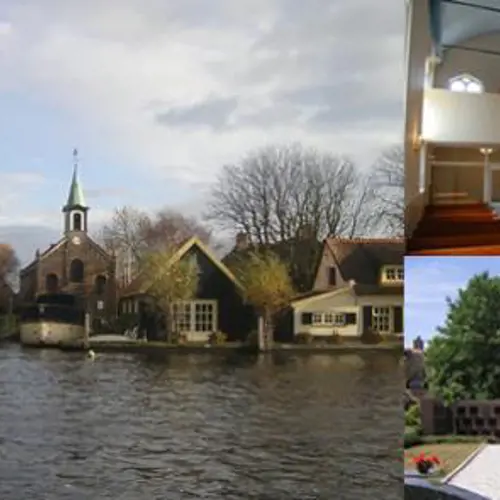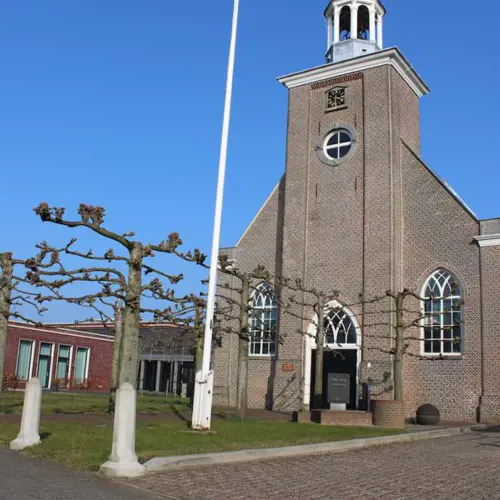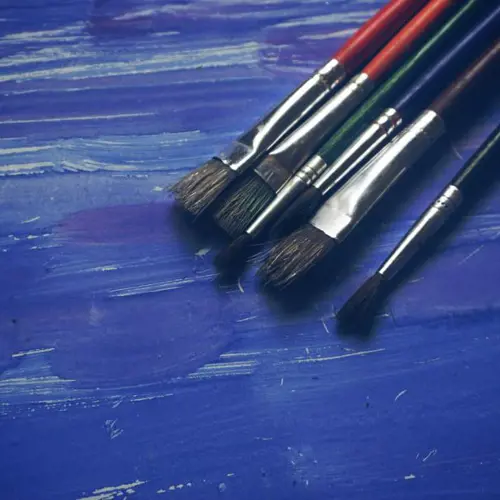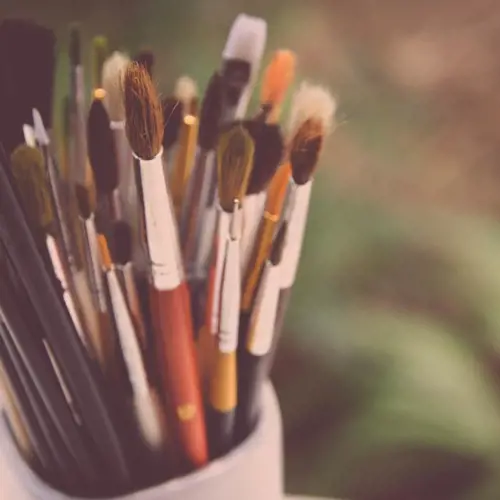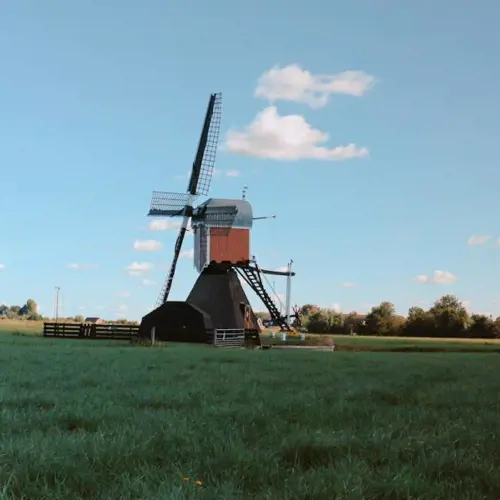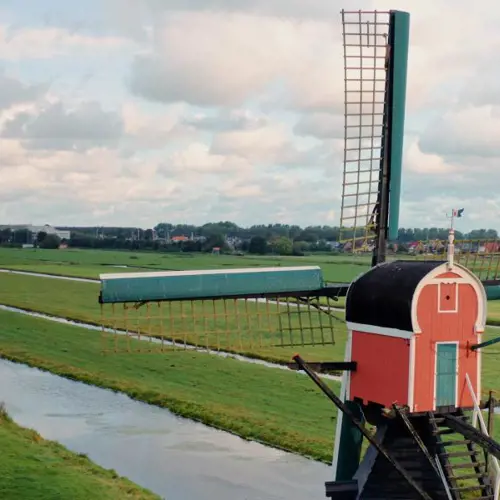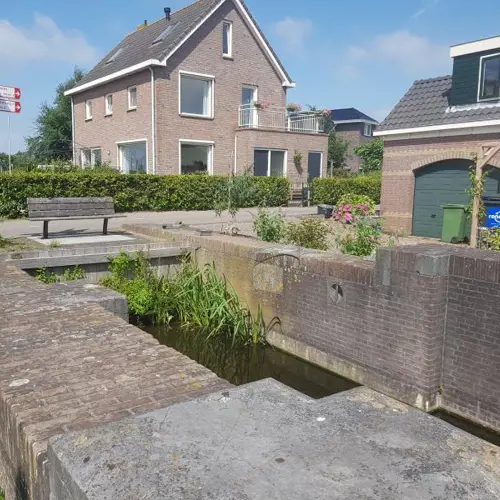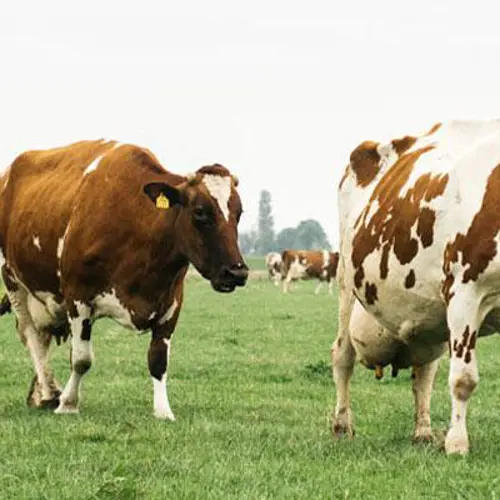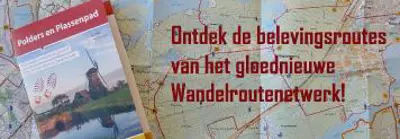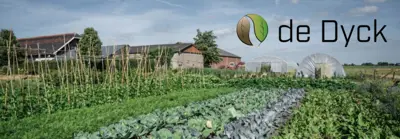Overview Sightseeing
Kaag en Braassem has a unique character with many windmills, churches, heritage sites, museums, parks and special places that it accommodates. Take the time to see them up close.
Go directly to
Akkerslootmolen
The Akkerslootmolen is an eight sided thatched rof ground-sailor dated from 1793. The mill can be deployed to drain te Akkersloot, Hertogs and Blijverspolder.
Doesmolen
The Doesmolen is most likely built in 1636 and forms a couple with the Kalkmolen. Together they drain the Doespolder.
Mills in Kaag & Braassem
Kaag & Braassem counts 20 mills, well actually 20 and 2 halves. Read more about the mills in our municipality.
Geestmolen
For the desiccation of the Grote Heilige Geestpolder, the Geestmolen, a ground-sailor, was built in 1707. On the burr of the mill however, it says 1833, in this year the top of the mill was fully restored.
Moppemolen
The Moppemolen was built in 1752 after fire destroyed its predecessor. Together with the Meerkrek this ground-sailer was used for drainage of the Veenderpolder and the Lijkerpolder beyond the dikes.
Waterloosmolen
The Waterloosmolen is an eight-sided, thatched roof ground-sailor, built in 1857 to drain the Waterloos polder.
Lijkermolen No. 2
Together Lijkermolen No. 1 and Lijkermolen No. 2 form a unique duo. They are the only twelve-sided stone mills in the Netherlands. The two ground-sailers (windmills that can be controlled from the ground) were built in 1780 on a pond which had had its peat removed (the current Drooggemaakte Veender- en Lijkerpolder) to drain it dry.
Vlietmolen
The Vlietmolen was built in 1913 to drain the Vlietpolder, after its predecessor burnt down. The top of the Vlietmolen wasn’t newly built, but originated from a smock mill from Ter Aar.
The Buurtermolen
The Buurtermolen, believed to have been built in the 18th century, was used to drain the Buurterpolder up to 1968. When this task was taken over by an electric pumping station, the hollow post mill fell into disrepair.
Kagerplassen (Lakes of Kaag)
The watersport area the ‘Kageplassen’ (lakes of Kaag) are centrally situated in the ‘Randstad’, between Amsterdam and Leiden and is the oldest watersports area of the Netherlands.
Woudse Dom
Originally De Woudse Dom in Rijnsaterwoude was a Roman Catholic church. The year of construction is unknown. After the Iconoclasm in 1556 the church became Protestant. The first pastor was Reverend Snoeckaert in 1573.
Veendermolen
This round stone ground-sailor lies on the banks of the Wijde Aa in Roelofarendsveen. The substructure is dated from 1830, the top was built in 1934 by the mill making company Verbij from Hoogmade.
Googermolen
In 1717 the Googermolen was built to drain the Googerpolder. The current miller is Jos van der Donk.
Watertoren
The water tower in Roelofarendsveen was built in 1931 to a design by the architect Hendrik Sangster. The tower is 31.5 meters high and has a water reservoir of 150 m³. Due to the enormous tulip on the stucco facades, the water tower is a striking landmark in the surroundings of Roelofarendsveen.
Veense Sluis (Veen Lock)
In 1632 the polder was closed due to flooding of the Braassem. Four wooden locks were built for water regulation and accessibility. The current sluice dates from 1897 and replaced the first, wooden sluice. This is the only lock remaining in the area.
Het Braassemermeer (The Braassemer Lake)
This area is home to many markets and is full of activities. The many villages, such as Roelofarendsveen, Rijpwetering, Oude Wetering and Ter Aar are characterised by intensive agriculture and horticulture.
Adermolen
The Adermolen is a ground-sailor from 1941. It’s a mill which can be operated from the ground. This round stone windmill with thatches roof is being used to drain the Aderpolder. The mill, an eight sided jack mill, which originally drained this poder, burnt down in 1880.
Grosmolen
This smock mill dated 1640 was used to drain the Voorofse or Grospolder. It was a working mill until 1956, after which it deteriorated.
Lijkermolen no. 1
Together Lijkermolen No. 1 and Lijkermolen No. 2 form a unique duo. They are the only twelve-sided stone mills in the Netherlands. The two ground-sailers (windmills that can be controlled from the ground) were built in 1780 on a pond which had had its peat removed (the current Drooggemaakte Veender- en Lijkerpolder) to drain it dry.
Blauwemolen
The Blauwe Polder (Blue Polder) owes his name to the smock mill with the blue painted top, which drained the polder. When this smock mill was broken down, in 1903. Mill maker Vrijburg from Oud Ade built the current Blauwemolen in 1904. With parts of an old ‘Boezemmolen’ (drainage mill) dated 1774 from Hillersberg.
Dekkermolen
This small smock mill was built around 1911, to drive a circular saw in the mill building company of Jan Dekker. After abolishing the company the mill was moved to a mill building company in Rijnsaterwoude.
Rodemolen
The Rodemolen in Oud Ade was built in 1632 to drain the Westlagelandspolder. The name of this polder didn’t last long, as in 1654 it already was mentioned the Roodmolenpolder (red mill polder), the current name is, in short, Rode Polder. So the polder was mentioned after the mill intead of the other way round.
Hoogmadese molen
The Hoogmadese windmill has been used for draining the Hoogmadesche polder and the Piestpolder since 1897. It is built on the foundations of an old hollow post windmill, which was in too poor a condition to be restored.
Vrouw Vennemolen
The Vrouw Vennemolen in Oud Ade dates from the 17th century and was largely renovated in 1835. The hollow post windmill with a red painted upper house can be used to drain the Vrouw Vennepolder.
Kalkmolen
The Kalkmolen is a smock mill and was built in 1684 to drain the Kalkpolder in Leiderdorp. The mill was partly broken down in 2006 and temporarily stored.
Kagermolen (Kager Windmill)
De Kager is a hollow post mill from the 17th century. The windmill has a red upper house and was completely restored in 1965.
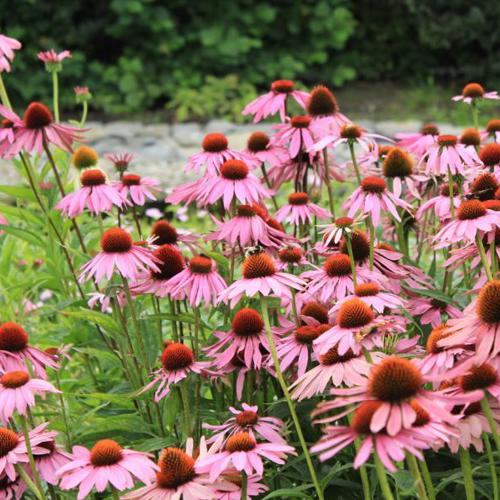
Zorgtuin De Tas
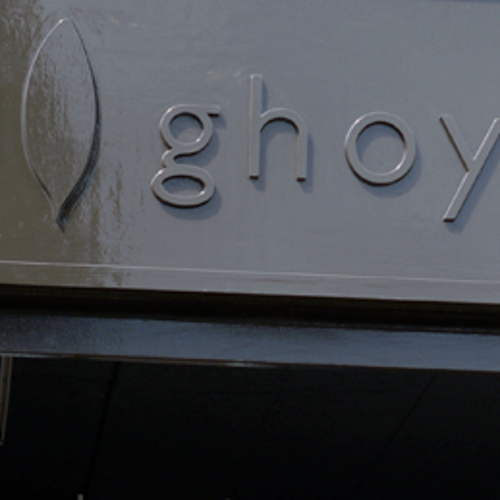
Ghoyhuys
